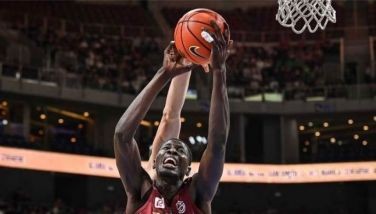How to plan for transport
There are two words that are often used interchangeably --transport and traffic-- maybe because they refer to almost the same thing. Or the same state in our perception. Transport is more often cited in academic circles as “mobility”, which is the ability for people to proceed with their daily lives moving from one place to another. The larger share of these movements are actually home-to-work trips in the morning (including home-to-school, and also in coming back in the afternoon). We want this to be faster, easier, and more convenient, as much as possible.
Traffic, on the other hand, or more specifically, traffic congestion, is an undesirable state of mobility. We want our mobility to be fast, preferably more direct (least number of different “rides”) and convenient. More often than not, our road infrastructure cannot cope with the ever-increasing demand, and when too many vehicles are using our roads, congestion sets in. Transport specialists use the “vehicle-capacity-ratio” or VCR as a measure of this, together with a parallel measure --LoS, or Level of Service. VCR measures
VCR is the measure of how many vehicles are on the road in relation to its capacity. However, VCR and LoS are often described differently so let’s just use the standard currently being used by DPWH (Dept. Order No.22, s.2013 --I don’t know if this has been revised already). For an LoS Class A, described as “free-flowing traffic,” the VCR is between less than 0.2. All the other classes are as follows (LoS:VCR, with description): B:0.21-0.50 (relatively free flowing traffic); C:0.51-0.70 (moderate traffic); D:0.71-.85 (moderate/heavy traffic), E:0.86-1.00 (heavy traffic), and F:>1.00 (saturation traffic volumes, stop and go situations. Other literature might set similar, but slightly different numbers. All roads can be described in this way, but in actual practice, this is more used to describe intersections. For obvious reasons.
These are the usual numbers parroted by transportation professionals, but these usually do not address mobility. A train in whatever form --LRT, MRT, subway can carry more people over the same strip of road space and so does a Bus Rapid Transit (BRT). That is why mass transportation and public transportation are often used interchangeably. But most people --the public mindset, and unfortunately, of most of our government planners, are still fixated on counting vehicles rather than people. Check all announcements for “new” infrastructure --highways, intersections, expressways-- their capacity is measured in the number of vehicles. But at the end of the day, our goal should be the number of people moved.
And to do this, we must look into the measure of people-per-hour-per-direction (PPHPD). Many people would insist LRT/MRT won’t need space as they’re elevated, but a quick check will tell us, they need about the same as one lane of highway, too. Only subways may not but they cost a lot, lot, more, their viability often comes into question. Which is why the ultimate goal is for rail-based or road-based public mass transportation --LRT, MRT, or BRT. Of the three, BRT often gives hands-down the highest economic viability figures. Decisions are often affected by institutional issues, however, which is unfortunate for the BRT. Not to mention even the decision-makers themselves misunderstand.
- Latest























